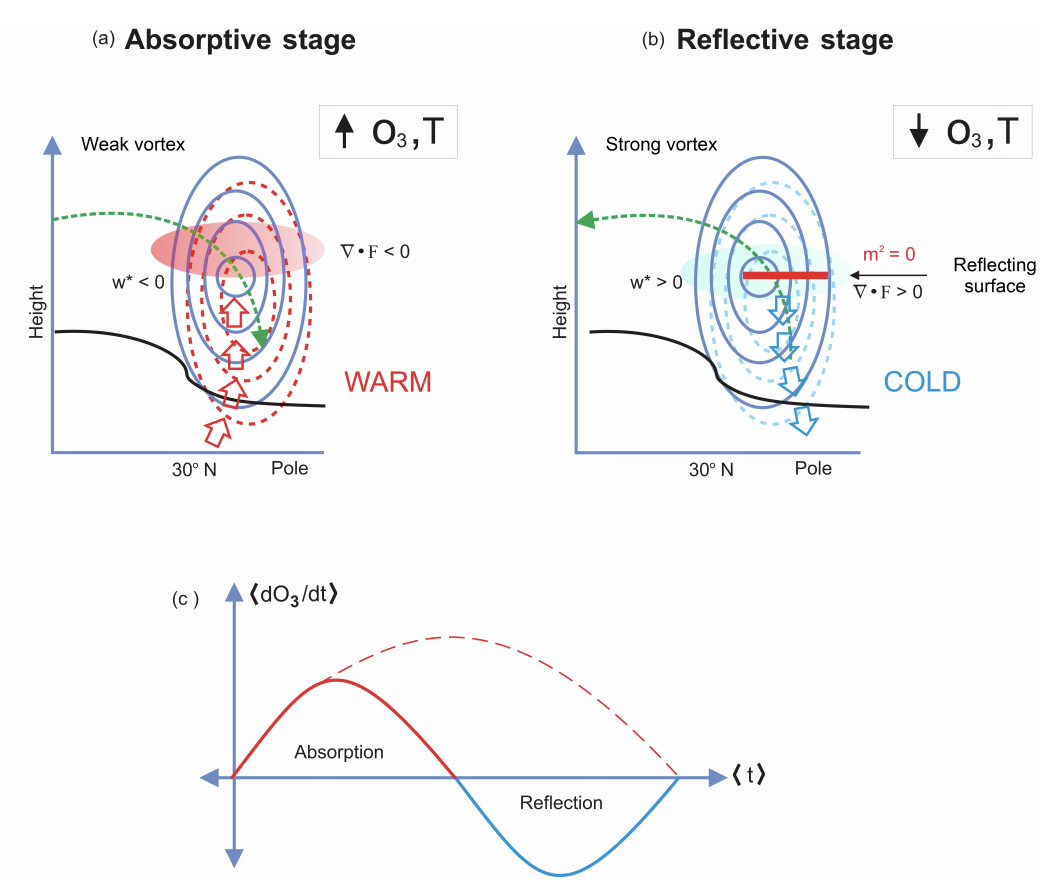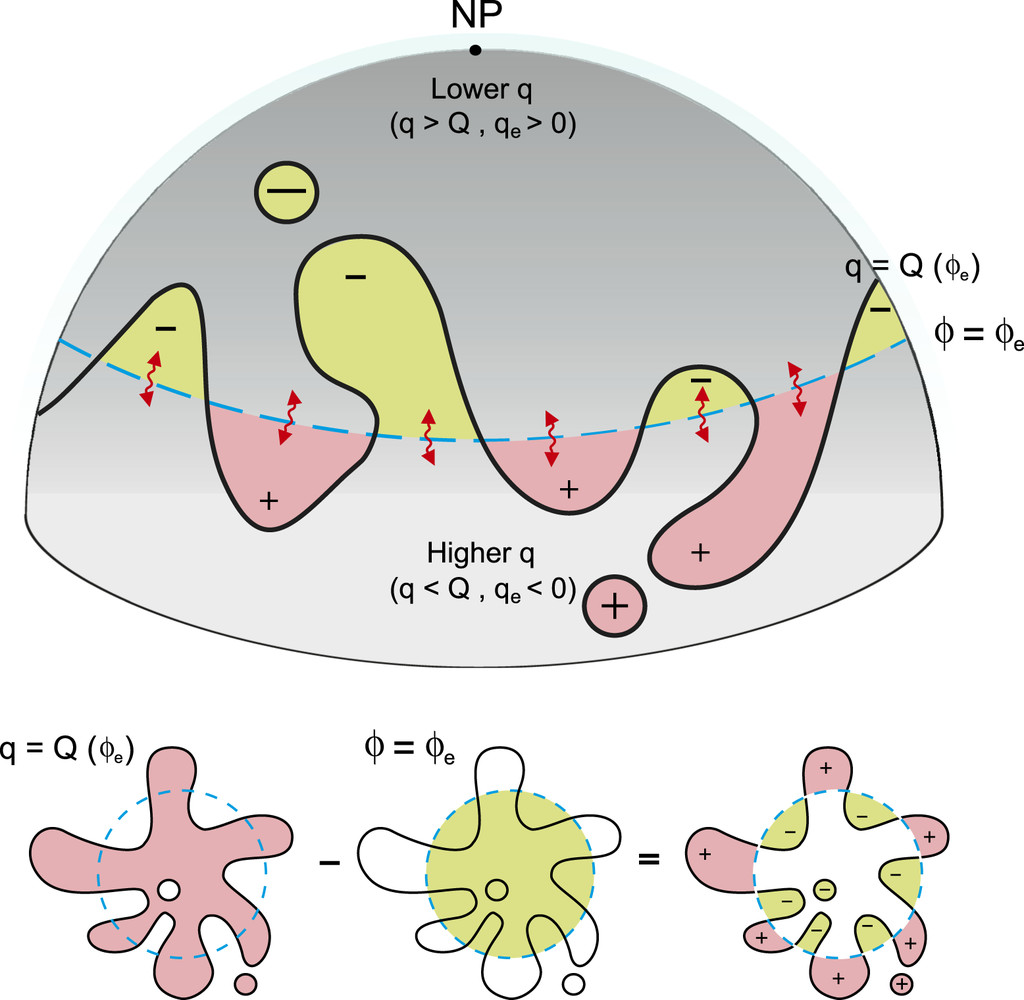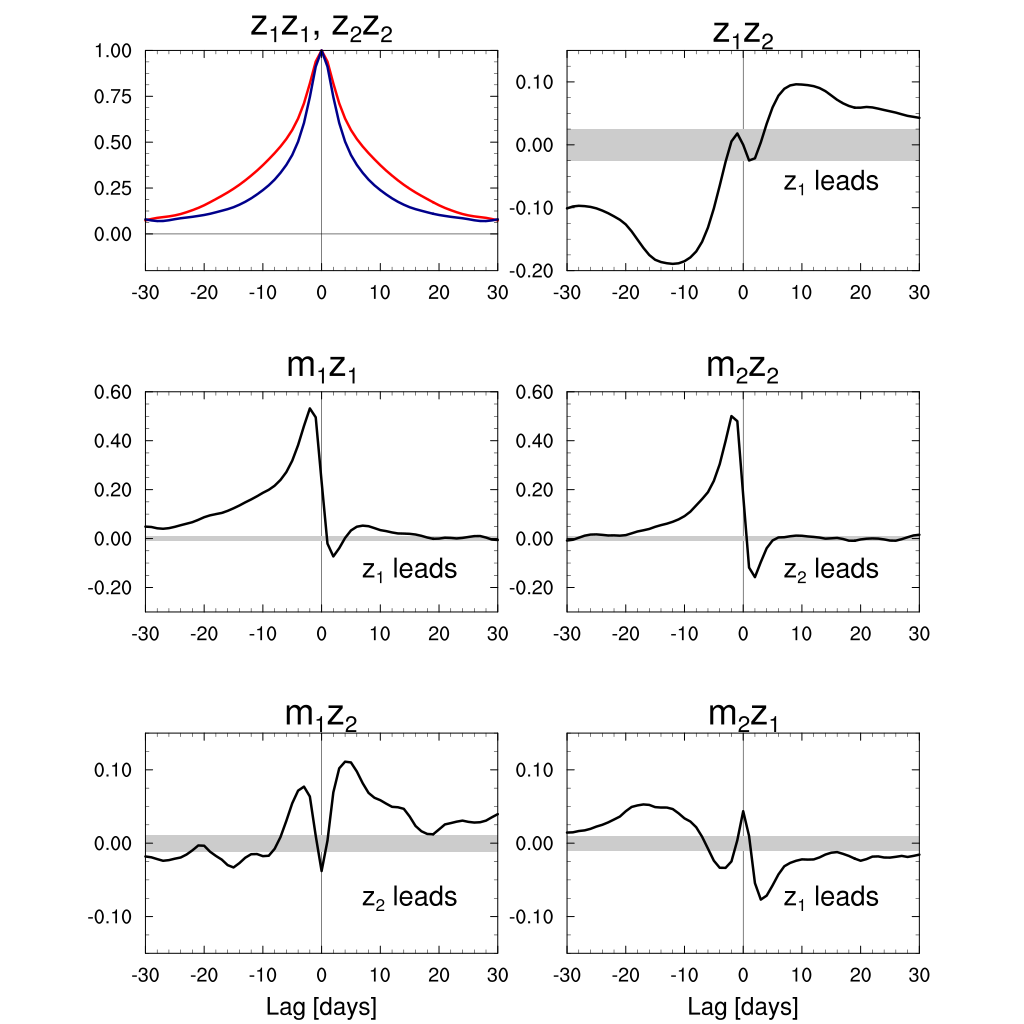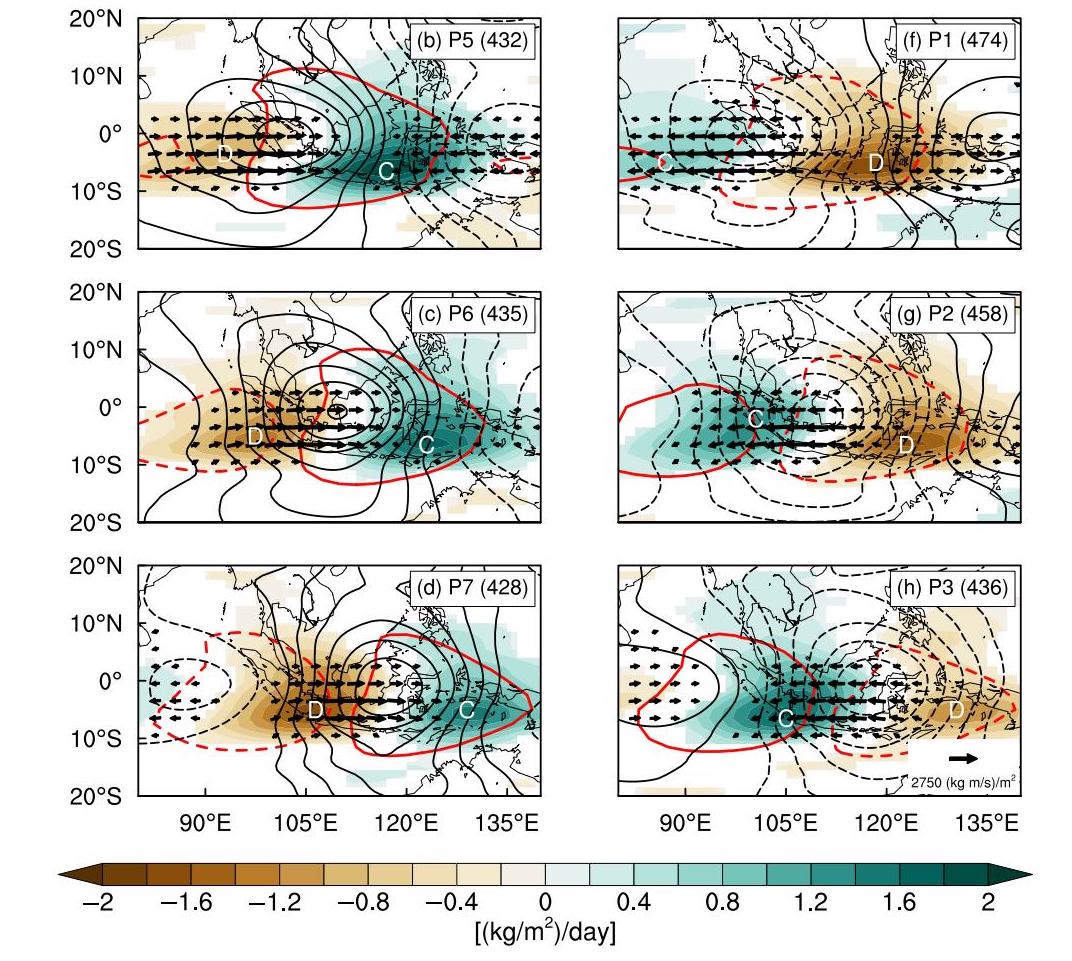Research
Stratospheric Planetary Wave Reflection

This research combines theory, numerical simulations and observational analyses to improve our understanding of how the reflection of stratospheric planetary waves (generated from the troposphere) influences surface climate (NAO, storm track, baroclinicity, etc) and ozone transport/chemistry in the middle atmosphere. I have been using a fully coupled chemistry-climate model (CESM-WACCM) alongside a wave geometry model to separate the classical index of refraction into its vertical and meridional components. This diagnostic provides a more accurate understanding of the propagation and dissipation characteristics of Rossby waves.
Selected Works:
- Lubis, S.W., K. Matthes, N. Harnik, N. Omrani, and S. Wahl. (2018). Downward Wave Coupling between the Stratosphere and Troposphere under Future Anthropogenic Climate Change. J. Climate, 31, 4135–4155. Link.
- Lubis, S.W., Silverman, V., Matthes, K., Harnik, N., Omrani, N.-E., and Wahl, S. (2017). How Does Downward Planetary Wave Coupling Affect Polar Stratospheric Ozone in the Arctic Winter Stratosphere?, Atmos. Chem. Phys. Link.
- Lubis, S.W., K. Matthes, N. Omrani, N. Harnik, and S. Wahl. (2016). Influence of the Quasi-Biennial Oscillation and Sea Surface Temperature Variability on Downward Wave Coupling in the Northern Hemisphere. J. Atmos. Sci., 73, 1943–1965. Link.
Sudden Stratospheric Warmings

There is growing evidence that stratospheric variability exerts a noticeable imprint on tropospheric weather and climate. Despite clear evidence of these impacts, the principal mechanism whereby stratospheric variability influences tropospheric circulation has remained elusive. We addressed this topic by applying a finite-amplitude, wave-mean flow interaction theory, which revealed that the downward migration of extratropical anomalies during SSW events was caused by fluctuations in finite-amplitude wave forcing. Additionally, our results uncovered several factors that controlled the duration and formation of SSWs, such as the behavior of wave transience and the diffusive flux of polar vortices. We also provide a new mechanism that maintains the persistence of the polar vortex recovery after sudden stratospheric warming events.
Selected Works:
- Lubis, S.W., C.S. Huang, N. Nakamura, N. Omrani, and M. Jucker. (2018a). Role of Finite-Amplitude Rossby Waves and Nonconservative Processes in Downward Migration of Extratropical Flow Anomalies. J. Atmos. Sci., 75, 1385–1401. Link.
- Lubis, S.W., C.S. Huang, and N. Nakamura. (2018b). Role of Finite-Amplitude Eddies and Mixing in the Life Cycle of Stratospheric Sudden Warmings. J. Atmos. Sci., 75,3987–4003. Link.
- Nakamura, N., J. Falk, and Lubis, S.W.. (2020). Why Are Stratospheric Sudden Warmings Sudden (and Intermittent)?. J. Atmos. Sci., 77, 943–964. Link.
Annular Mode Dynamics

The variability of the zonal-mean large-scale extratropical circulation is often studied using individual modes obtained from empirical orthogonal function (EOF) analyses. The prevailing reduced-order model of the leading EOF (EOF1) of zonal-mean zonal wind, called the annular mode, consists of an eddy-mean flow interaction mechanism that results in a positive feedback of EOF1 onto itself (Lorenz and Hartmann 2001). However, a few studies have pointed out that under some circumstances in observations and GCMs, strong couplings exist between EOF1 and EOF2 at some lag times, resulting in decaying-oscillatory, or propagating annular modes. Here, we introduce a reduced-order model for coupled EOF1 and EOF2 that accounts for potential cross-EOF eddy-zonal flow feedbacks, i.e., EOF1 (EOF2) changing the eddy forcing of EOF2 (EOF1) at the quasi-steady limit. The results highlight the importance of considering the coupling of EOFs and cross-EOF feedbacks to fully understand the natural and forced variability of the zonal-mean large-scale circulation and to evaluate how well GCMs simulate the annular modes.
Selected Works:
- Lubis, S. W., and P. Hassanzadeh. (2023): The Intrinsic 150-day Periodicity of the Southern Hemisphere Extratropical Large-Scale Atmospheric Circulation. AGU Advances. 4. Link.
- Lubis, S.W., and P. Hassanzadeh. (2020). An Eddy-Zonal Flow Feedback Model for Propagating Annular Modes. J. Atmos. Sci., 154. Link.
Tropical Waves and Extreme Weather

Convectively coupled equatorial waves (CCEWs) significantly influence tropical weather variability and the climate system. To understand their impact on tropical precipitation, I analyzed various observational data, including those from the Tropical Rainfall Measuring Mission (TRMM) satellite and APHRODITE. Our studies revealed that CCEWs resemble equatorially trapped shallow water wave structures. Although less dominant than other tropical oscillations, CCEWs have a major impact on precipitation variability and extremes during boreal summers and winters. These findings suggest the importance of equatorial waves in high-impact weather events. Incorporating equatorial waves as precursors in operational forecasts can undoubtedly improve the accuracy of forecasting models.
Selected Works:
- Lubis, S. W., S.M. Hagos, Chang C., K. Balaguru, and R. Leung. (2023): Cross-Equatorial Surges Boost MJO's Southward Detour over the Maritime Continent. Geophysical Research Letters. 50. Link.
- Lubis, S. W., et al.,(2022). Record-Breaking Precipitation in Indonesia's Capital of Jakarta in Early-January 2020 Linked to the Northerly Surge, Equatorial Waves, and MJO. GRL, 49. Link.
- Lubis, S.W. and Respati, M.R. (2021). Impacts of Convectively Coupled Equatorial Waves on Rainfall Extremes in Java, Indonesia. Int J Climatol., 41, 2418-2440. Link.
- Muhammad, F.R., Lubis, S.W., Setiawan, S. (2020). Impacts of the Madden–Julian Oscillation on Precipitation Extremes in Indonesia. Int J Climatol., 41, 1979-1984. Link.
- Lubis, S.W. and Ch. Jacobi. (2015). The Modulating Influence of Convectively Coupled Equatorial Waves (CCEWs) on the Variability of Tropical Precipitation. Int. J. Climatol., 35, 1465-1483. Link.